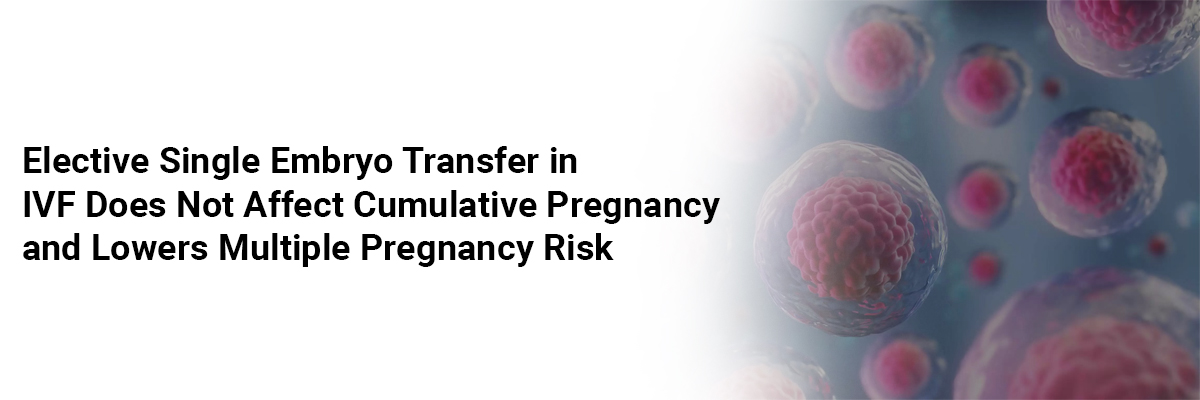
 IJCP Editorial Team
IJCP Editorial Team
Elective Single Embryo Transfer in IVF Does Not Affect Cumulative Pregnancy and Lowers Multiple Pregnancy Risk
A new study aimed to assess whether elective
single embryo transfer is less effective in achieving pregnancy rates compared
to double embryo transfer in patients with a suboptimal response to ovarian
stimulation.
This was a retrospective, case-controlled study that involved couples undergoing in vitro fertilization (IVF) with a limited number of oocytes (≤9) and at least two viable embryos. Overall, 424 women were analyzed and divided into two groups – "double embryo transfer" and "elective single embryo transfer," each containing 212 individuals. These groups were matched according to the age, ovarian reserve, and the number of previous cycles. The primary outcome was the cumulative clinical pregnancy rate per oocyte retrieval.
It was found that the cumulative pregnancy rate per cycle, considering both fresh and subsequent frozen embryo transfers, was 26% for both groups. After accounting for confounding factors, a logistic model indicated that performing a single embryo transfer in women with up to nine oocytes did not significantly impact the cumulative clinical pregnancy rate.
It was noted that the live birth rate was similar in both groups, but the incidence of twin pregnancies was significantly lower in the single embryo transfer group. Hence, elective single embryo transfer in patients with a limited number of embryos does not adversely affect pregnancy rates.
Source:Paffoni A, Cesana S, Corti L, Wyssling H,
Kunderfranco A, Bianchi MC. J Obstet Gynecol India. 2023 Jun 7:1-7.

IJCP Editorial Team
Comprising seasoned professionals and experts from the medical field, the IJCP editorial team is dedicated to delivering timely and accurate content and thriving to provide attention-grabbing information for the readers. What sets them apart are their diverse expertise, spanning academia, research, and clinical practice, and their dedication to upholding the highest standards of quality and integrity. With a wealth of experience and a commitment to excellence, the IJCP editorial team strives to provide valuable perspectives, the latest trends, and in-depth analyses across various medical domains, all in a way that keeps you interested and engaged.





















Please login to comment on this article